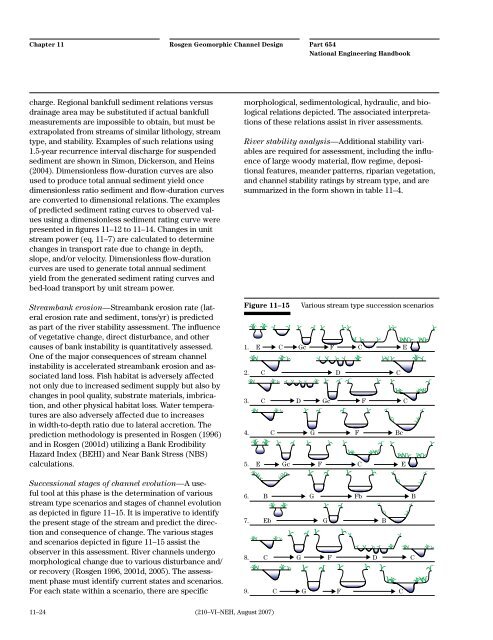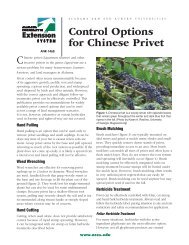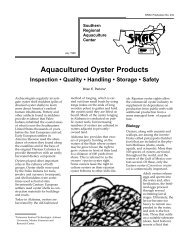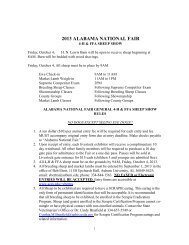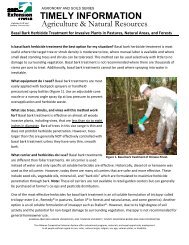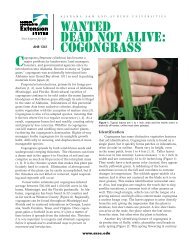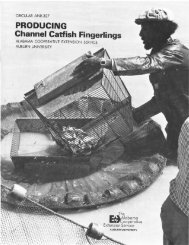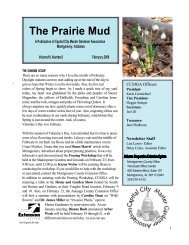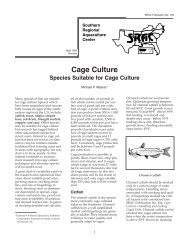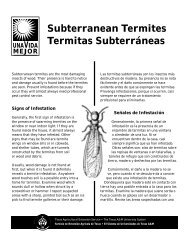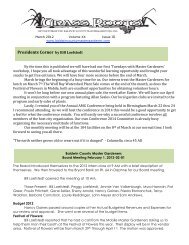Chapter 11--Rosgen Geomorphic Channel Design
Chapter 11--Rosgen Geomorphic Channel Design
Chapter 11--Rosgen Geomorphic Channel Design
You also want an ePaper? Increase the reach of your titles
YUMPU automatically turns print PDFs into web optimized ePapers that Google loves.
<strong>Chapter</strong> <strong>11</strong><br />
charge. Regional bankfull sediment relations versus<br />
drainage area may be substituted if actual bankfull<br />
measurements are impossible to obtain, but must be<br />
extrapolated from streams of similar lithology, stream<br />
type, and stability. Examples of such relations using<br />
1.5-year recurrence interval discharge for suspended<br />
sediment are shown in Simon, Dickerson, and Heins<br />
(2004). Dimensionless flow-duration curves are also<br />
used to produce total annual sediment yield once<br />
dimensionless ratio sediment and flow-duration curves<br />
are converted to dimensional relations. The examples<br />
of predicted sediment rating curves to observed values<br />
using a dimensionless sediment rating curve were<br />
presented in figures <strong>11</strong>–12 to <strong>11</strong>–14. Changes in unit<br />
stream power (eq. <strong>11</strong>–7) are calculated to determine<br />
changes in transport rate due to change in depth,<br />
slope, and/or velocity. Dimensionless flow-duration<br />
curves are used to generate total annual sediment<br />
yield from the generated sediment rating curves and<br />
bed-load transport by unit stream power.<br />
Streambank erosion—Streambank erosion rate (lateral<br />
erosion rate and sediment, tons/yr) is predicted<br />
as part of the river stability assessment. The influence<br />
of vegetative change, direct disturbance, and other<br />
causes of bank instability is quantitatively assessed.<br />
One of the major consequences of stream channel<br />
instability is accelerated streambank erosion and associated<br />
land loss. Fish habitat is adversely affected<br />
not only due to increased sediment supply but also by<br />
changes in pool quality, substrate materials, imbrication,<br />
and other physical habitat loss. Water temperatures<br />
are also adversely affected due to increases<br />
in width-to-depth ratio due to lateral accretion. The<br />
prediction methodology is presented in <strong>Rosgen</strong> (1996)<br />
and in <strong>Rosgen</strong> (2001d) utilizing a Bank Erodibility<br />
Hazard Index (BEHI) and Near Bank Stress (NBS)<br />
calculations.<br />
Successional stages of channel evolution—A useful<br />
tool at this phase is the determination of various<br />
stream type scenarios and stages of channel evolution<br />
as depicted in figure <strong>11</strong>–15. It is imperative to identify<br />
the present stage of the stream and predict the direction<br />
and consequence of change. The various stages<br />
and scenarios depicted in figure <strong>11</strong>–15 assist the<br />
observer in this assessment. River channels undergo<br />
morphological change due to various disturbance and/<br />
or recovery (<strong>Rosgen</strong> 1996, 2001d, 2005). The assessment<br />
phase must identify current states and scenarios.<br />
For each state within a scenario, there are specific<br />
<strong>Rosgen</strong> <strong>Geomorphic</strong> <strong>Channel</strong> <strong>Design</strong><br />
<strong>11</strong>–24 (210–VI–NEH, August 2007)<br />
Part 654<br />
National Engineering Handbook<br />
morphological, sedimentological, hydraulic, and biological<br />
relations depicted. The associated interpretations<br />
of these relations assist in river assessments.<br />
River stability analysis—Additional stability variables<br />
are required for assessment, including the influence<br />
of large woody material, flow regime, depositional<br />
features, meander patterns, riparian vegetation,<br />
and channel stability ratings by stream type, and are<br />
summarized in the form shown in table <strong>11</strong>–4.<br />
Figure <strong>11</strong>–15 Various stream type succession scenarios<br />
1.<br />
2.<br />
3.<br />
4.<br />
5.<br />
6.<br />
7.<br />
8.<br />
9.<br />
E C Gc F C E<br />
C D C<br />
C D Gc F C<br />
C G F Bc<br />
E Gc F C<br />
E<br />
B G Fb<br />
B<br />
Eb G B<br />
C G F<br />
D<br />
C<br />
C G F<br />
C


